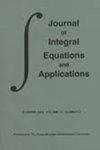机器人假体控制器最优emg定位的快速多尺度函数估计
IF 0.9
4区 数学
Q2 MATHEMATICS
引用次数: 0
摘要
本文章由计算机程序翻译,如有差异,请以英文原文为准。
FAST MULTISCALE FUNCTIONAL ESTIMATION IN OPTIMAL EMG PLACEMENT FOR ROBOTIC PROSTHESIS CONTROLLERS
Electrocardiogram (EMG) signals play a significant role in decoding muscle contraction information for robotic hand prosthesis controllers. Widely applied decoders require large amount of EMG signals sensors, resulting in complicated calculations and unsatisfactory predictions. By the biomechanical process of single degree-of-freedom human hand movements, only several EMG signals are essential for accurate predictions. Recently, a novel predictor of hand movements adopts a multistage Sequential, Adaptive Functional Estimation (SAFE) method based on historical Functional Linear Model (FLM) to select important EMG signals and provide precise projections. However, SAFE repeatedly performs matrix-vector multiplications with a dense representation matrix of the integral operator for the FLM, which is computational expansive. Noting that with a properly chosen basis, the representation of the integral operator concentrates on a few bands of the basis, the goal of this study is to develop a fast Multiscale SAFE (MSAFE) method aiming at reducing computational costs while preserving (or even improving) the accuracy of the original SAFE method. Specifically, a multiscale piecewise polynomial basis is adopted to discretize the integral operator for the FLM, resulting in an approximately sparse representation matrix, and then the matrix is truncated to a sparse one. This approach not only accelerates computations but also improves robustness against noises. When applied to real hand movement data, MSAFE saves 85%$\sim$90% computing time compared with SAFE, while producing better sensor selection and comparable accuracy. In a simulation study, MSAFE shows stronger stability in sensor selection and prediction accuracy against correlated noise than SAFE.
求助全文
通过发布文献求助,成功后即可免费获取论文全文。
去求助
来源期刊

Journal of Integral Equations and Applications
MATHEMATICS, APPLIED-MATHEMATICS
CiteScore
1.30
自引率
0.00%
发文量
16
审稿时长
>12 weeks
期刊介绍:
Journal of Integral Equations and Applications is an international journal devoted to research in the general area of integral equations and their applications.
The Journal of Integral Equations and Applications, founded in 1988, endeavors to publish significant research papers and substantial expository/survey papers in theory, numerical analysis, and applications of various areas of integral equations, and to influence and shape developments in this field.
The Editors aim at maintaining a balanced coverage between theory and applications, between existence theory and constructive approximation, and between topological/operator-theoretic methods and classical methods in all types of integral equations. The journal is expected to be an excellent source of current information in this area for mathematicians, numerical analysts, engineers, physicists, biologists and other users of integral equations in the applied mathematical sciences.
 求助内容:
求助内容: 应助结果提醒方式:
应助结果提醒方式:


